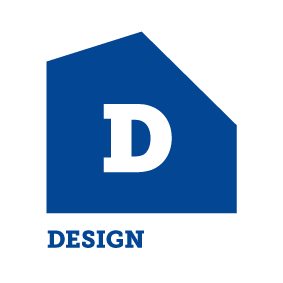Certificates of Work and Documenting Collaborative Design
Codewords 99: February 2021
Last issue we covered the basics of Certificates of Work (CoWs). In this article we go into more detail about how to include multiple contributors in your documentation.

Design can be a collaborative process, especially on more challenging projects. Sometimes a piece of specialty design will be included in your overall design. Whether you have complex foundation designed by a civil engineer, or have included pre-fabricated timber trusses, if another designer has designed restricted building work (RBW) it will need to be included in CoW documentation.
Who can issue a CoW
Professionals who are licensed or registered to be able to do design RBW can provide CoW for that work. This includes:
- Licensed Building Practitioners with a Design license
- Registered architects (NZRAB)
- Chartered Professional Engineers (CPEng)
Under current regulation CPEng (under the Chartered Professional Engineers of New Zealand Act 2002) and registered architects (under the Registered Architects Act 2005) are automatically treated as LBPs licensed in the design class Area of Practice 3. Registered Architects and Chartered Processional Engineers have their own registration bodies that manage their registration and oversee their professional conduct.
Collaborative design
Where two or more LBPs (or other suitably registered professional) are involved in carrying out or supervising the design work for a building consent application involving RBW, there may be a choice about who provides the CoW(s). If a particular design is both carried out and supervised by LBPs licensed in design, the CoW could be provided by either the LBP that carried out the design work or the one that supervised it. However, if two designers work on different aspects of the plans and specifications that are RBW (e.g. one designs the foundation and another designs elements of the superstructure), then each designer would be expected to provide a CoW for their respective parts.
Producing and signing a CoW means a designer is providing a statutory undertaking, certifying that the design documents are compliant to the building code. You can provide a CoW that covers other LBP designers’ work but it is important to be aware that in this context the one who signs the CoW is taking responsibility via that certification statement. You may be ‘signing-off’ someone else’s work, saying that it complies with the building code so you need to ensure you do your due diligence on that work.
Including producer statements
A producer statement is a document prepared by a Chartered Professional Engineer confirming their professional opinion. This opinion is based on stated reasonable grounds that aspects of design of a building achieve compliance with the Building Code, or that elements of construction have been completed in accordance with the approved building consent. The producer statement contains the name of the engineer and their firm to signal to the Building Consent Authority that certain design/monitoring work has been done (or overseen/supervised) by a practitioner who is competent to perform the defined work. However, a Producer Statement is not a product warranty or guarantee of compliance. It is a professional opinion based on sound engineering judgment.
An LBP may reference a producer statement in a CoW when an engineered element has been used in a design. An example of this could be when factory designed and built trusses are incorporated in a design. The LBP would specify the truss and ensure it was fit for purpose in the overall design; however the detailed design was carried out by the truss producer, so the producer statement could be referred to in the CoW for that section of the design.
Where a Producer Statement has been used to support the demonstration of Building Code compliance, it should be cited in the ‘reference column’ of the CoW, along with other relevant specifications and reports (i.e. geotechnical engineering report).
Further Guidance
Further guidance on the use of Certificates of Work, Producer Statements, and Design Features Reports(external link) relating to RBW. This particular guidance document was developed for practitioners working on the Canterbury rebuild, however the same principles apply for design RBW anywhere in New Zealand.
More information about producer statements can also be found on the Engineering New Zealand website.(external link)
Quiz
- Who can design RBW
- Design LBPs
- Registered Architects
- Chartered Professional Engineers
- All of the above
- If a Chartered Professional Engineers designed some of the RBW on a project, it can be documented by
- Referencing a producer statement from the engineer in your CoW, if the engineered element is used in your design
- A separate CoW provided by the CPEng
- It does not need to be documented which CPEng completed the design of the RBW
- a and/or b may be appropriate, depending on the situation
- You are using prefabricated trusses in your design. The trusses were designed in the factory, how do you include this restricted design work in a CoW?
- By referencing a producer statement from the truss manufacturer in your CoW, and showing how you have incorporated the trusses in your design
- The factory must produce a CoW for every site project where their trusses are used
- I don’t need to reference the trusses at all in my CoW
Check answers
- Who can design RBW
- All of the above
- If a Chartered Professional Engineers designed some of the RBW on a project, it can be documented by
- a and/or b may be appropriate, depending on the situation
- You are using prefabricated trusses in your design. The trusses were designed in the factory, how do you include this restricted design work in a CoW?
- By referencing a producer statement from the truss manufacturer in your CoW, and showing how you have incorporated the trusses in your design
